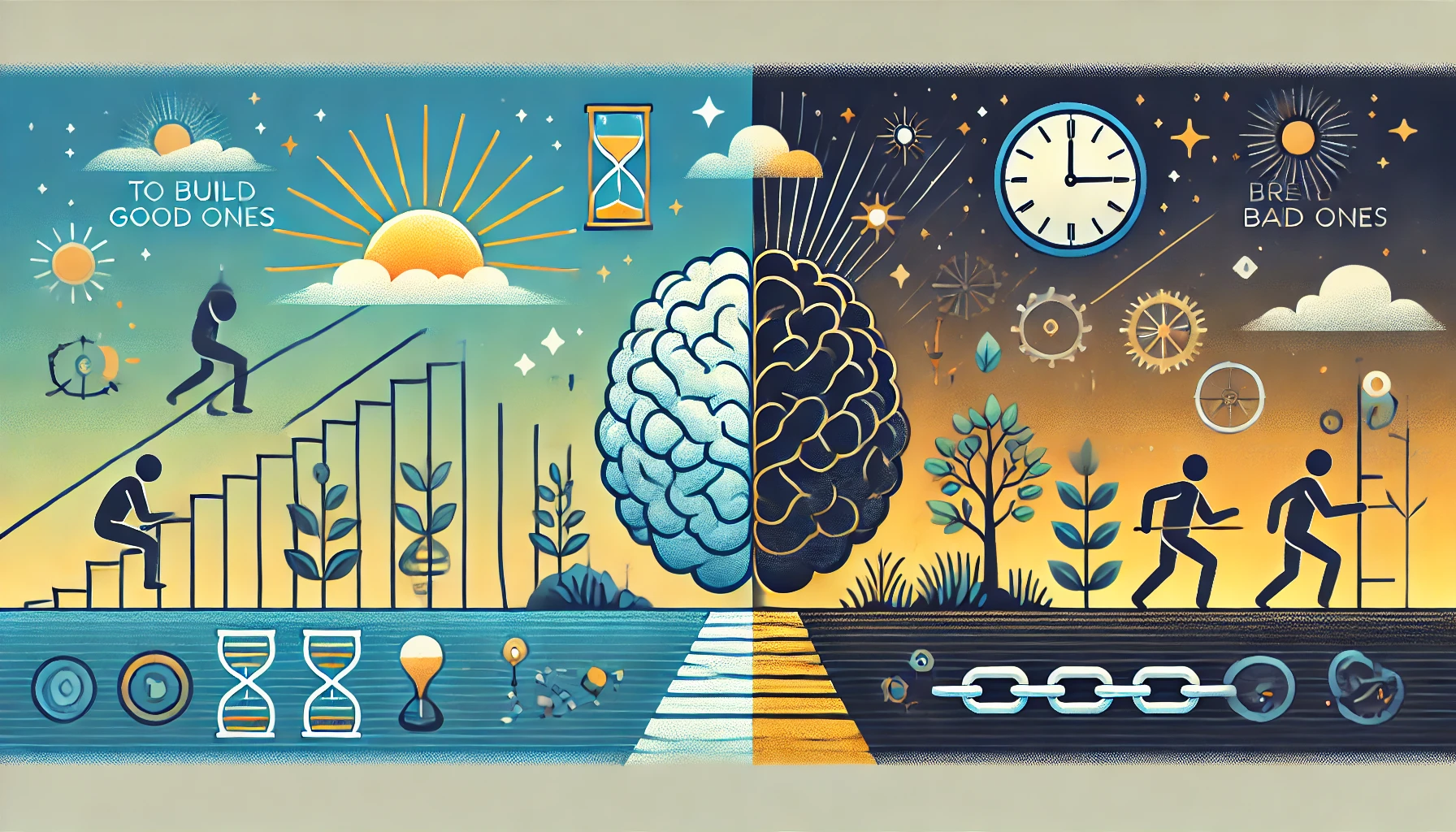The Psychology of Habits – How to Build Good Ones and Break Bad Ones
Habits shape our daily lives, influencing everything from our productivity and health to our emotions and relationships. Understanding the psychology behind habits can help us take control of our actions, making it easier to adopt positive routines and eliminate harmful behaviors. This blog explores how habits are formed, why they are so powerful, and strategies to create lasting change
Introduction
Habits shape our daily lives, influencing everything from our productivity and health to our emotions and relationships. Understanding the psychology behind habits can help us take control of our actions, making it easier to adopt positive routines and eliminate harmful behaviors. This blog explores how habits are formed, why they are so powerful, and strategies to create lasting change.
Understanding Habit Formation
A habit is a behavior repeated regularly until it becomes automatic. According to research in psychology, habits follow a three-step cycle called the Habit Loop:
Cue (Trigger) – A signal that prompts a habit (e.g., feeling stressed leads to snacking).
Routine (Behavior) – The action taken in response to the cue (e.g., eating junk food).
Reward (Outcome) – The benefit gained from the action (e.g., temporary relief from stress).
By understanding this cycle, we can manipulate it to form good habits and break bad ones.
How to Build Good Habits
Start Small:-Instead of aiming for big changes, focus on small, achievable goals. For example, if you want to exercise, start with five minutes a day rather than an hour.
Use Habit Stacking:-Attach a new habit to an existing one. Example: If you drink coffee every morning, use that time to read one page of a book.
Make It Easy:-Reduce obstacles to building a habit. If you want to eat healthy, keep fruits and vegetables easily accessible.
Stay Consistent:-Repetition is key. Studies show that it takes about 21 to 66 days for a new habit to become automatic.
Track Your Progress:-Use a habit tracker or journal to monitor your progress and stay motivated.
Reward Yourself:-Positive reinforcement strengthens habits. Reward yourself with something enjoyable, like listening to music after completing a workout.
How to Break Bad Habits
Identify Your Triggers:-Recognizing what triggers a bad habit (stress, boredom, environment) is the first step to breaking it.
Replace, Don’t Remove:-Instead of just stopping a habit, replace it with a better one. Example: If you usually smoke when stressed, try deep breathing or drinking herbal tea instead.
Make It Harder:-Increase the effort required for a bad habit. If you spend too much time on social media, delete apps or use website blockers.
Change Your Environment:-Surround yourself with people and places that support your goals. Example: If you want to eat healthier, avoid stocking junk food at home.
Practice Mindfulness:-Being aware of your actions helps prevent automatic behaviors. Pause and ask yourself why you’re doing something before acting.
Seek Support:-Tell friends or family about your goal. A strong support system increases accountability and motivation.
Conclusion
Habits, whether good or bad, shape our lives. Understanding the psychology behind them allows us to create lasting positive changes. By being intentional, consistent, and mindful, we can build habits that improve our productivity, health, and overall well-being.
.png)






Leave a Comment
Your email address will not be published. Required fields are marked *